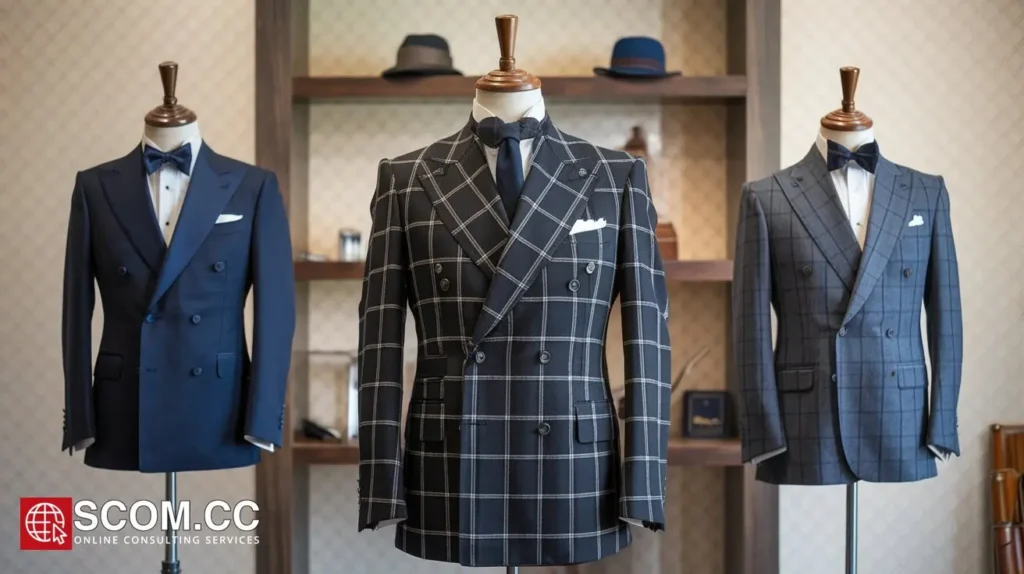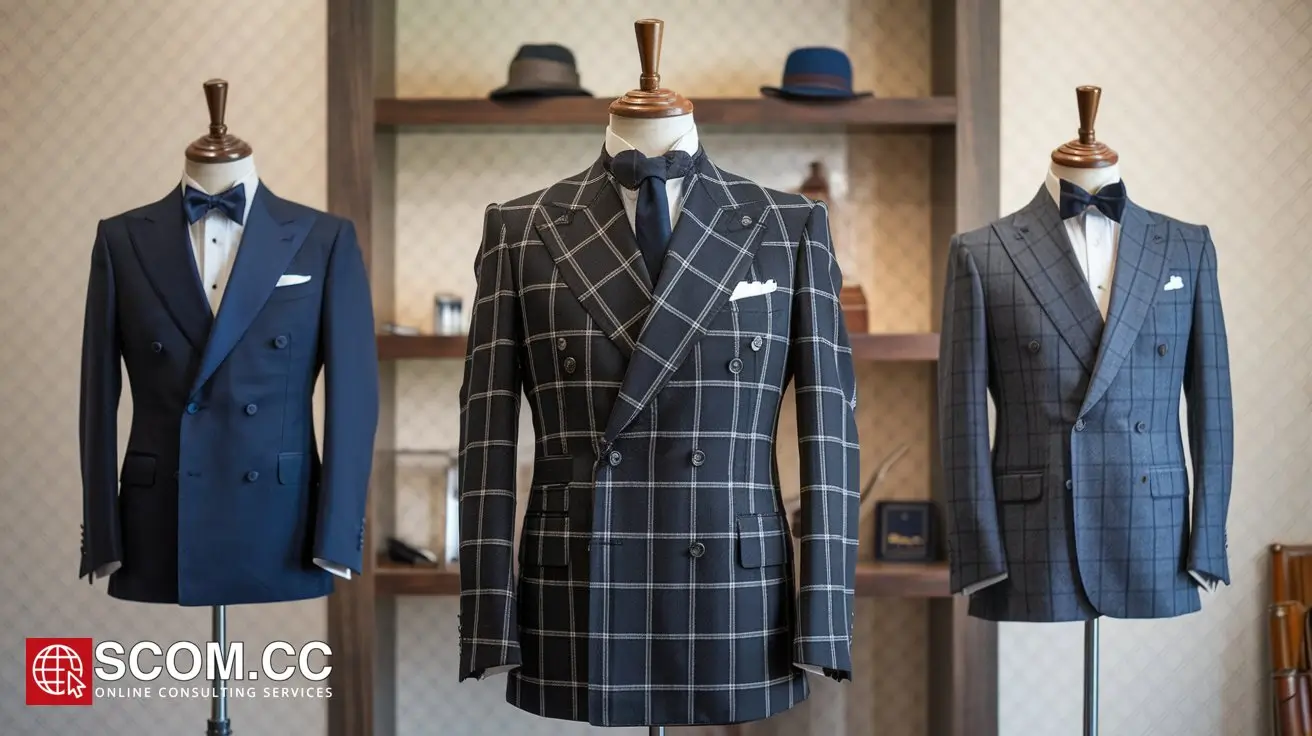How to Match a Suit with Your Personal Style

- How to Match a Suit with Your Personal Style
- Understand Your Personal Style
- Choose the Right Fabric
- Select the Right Color and Pattern
- Accessorize to Enhance Your Style
- Tailoring and Fit
-
FAQ
- 1. What should I consider when choosing a suit fabric?
- 2. How do I determine my personal style for choosing a suit?
- 3. What colors are best for a classic suit?
- 4. How can I accessorize a suit to match my personal style?
- 5. What are the key aspects of a well-fitted suit?
- 6. How do I choose between a single-breasted and double-breasted suit?
- 7. How should I care for my suit to ensure longevity?
How to Match a Suit with Your Personal Style
Choosing a suit that aligns with your personal style is crucial for creating a polished and authentic appearance. Whether you’re dressing for a professional setting, a social event, or a special occasion, the right suit can enhance your confidence and make a lasting impression. In this guide, we will explore how to match a suit with your personal style, ensuring you look both stylish and comfortable.
Understand Your Personal Style
Before selecting a suit, it’s important to have a clear understanding of your personal style. This involves identifying key elements of your wardrobe and how you typically dress.
Classic Style
If your wardrobe is filled with timeless pieces, such as tailored trousers, blazers, and neutral colors, a classic suit is ideal. Opt for well-fitted, traditional suits in navy, charcoal gray, or black. Choose a single-breasted design with notch lapels for a refined and versatile look.
Modern Style
For those who prefer a contemporary and sleek look, a modern suit is the way to go. Look for suits with slim fits, sharp lines, and bold colors or patterns. Peak lapels and double-breasted designs can add a touch of modern sophistication to your ensemble.
Casual Style
If your style leans towards the relaxed and informal, a casual suit made from cotton or linen can complement your wardrobe. Opt for lighter colors and less structured fits, and consider blazers and chinos for a more laid-back approach.
Trendy Style
For those who enjoy experimenting with fashion, a trendy suit allows you to make a statement. Look for unique patterns, vivid colors, or fashion-forward cuts. Mix and match different textures and accessories to reflect your adventurous style.
Choose the Right Fabric
The fabric of your suit plays a significant role in defining your style and ensuring comfort.
Wool
Wool is a versatile fabric suitable for most occasions. It works well for both classic and modern styles, providing a good balance of durability and comfort. Opt for pure wool or a wool blend for year-round wear.
Cotton
Cotton suits are perfect for casual and summer styles. They offer breathability and comfort, making them ideal for relaxed settings. Choose a lightweight cotton for a breezy and comfortable look.
Linen
Linen is ideal for hot climates and casual events. Its natural texture and breathability align well with a laid-back, stylish approach. However, be prepared for some wrinkling, which adds to its relaxed charm.
Blends
Blended fabrics such as wool-polyester or wool-elastane combine the best features of each material. They are often more affordable and easier to care for, making them a great choice for both trendy and classic styles.
Select the Right Color and Pattern
The color and pattern of your suit should reflect your personal style and the occasion.
Solid Colors
Solid colors are versatile and timeless. Choose classic shades like navy, gray, or black for a sophisticated look. For a touch of individuality, consider subtle hues like charcoal blue or deep burgundy.
Patterns
Patterns add personality and can set your suit apart. Pinstripes and checks are ideal for professional settings, while plaids and geometric patterns work well for more casual or trendy styles. Ensure the pattern complements the overall look of the suit.
Fabric Finish
The finish of the fabric can also impact the suit’s appearance. Matte finishes offer a classic and understated look, while shiny or satin finishes add a touch of glamour for special occasions.
Accessorize to Enhance Your Style
Accessories play a crucial role in complementing your suit and personal style. Consider the following elements to complete your look:
Ties
The tie is a key accessory that can enhance your suit’s style. Choose a silk tie for a formal look or a knit tie for a more casual vibe. Experiment with patterns and colors that align with your personal style and the suit’s design.
Pocket Squares
A pocket square adds a touch of elegance and individuality. Opt for a contrasting color or pattern to make a statement, or choose a matching one for a cohesive look.
Shoes
Your choice of shoes should complement the suit’s style. Leather dress shoes in classic colors like black or brown work well for formal settings. For a more relaxed look, consider loafers or derby shoes.
Belts and Cuffs
Select a belt that matches your shoes to maintain a polished appearance. Ensure that cufflinks and other jewelry items align with your overall style, adding a refined touch without overpowering the look.
Tailoring and Fit
The fit of your suit is paramount to achieving a stylish and comfortable look. Ensure that the suit is tailored to your body for a perfect fit. Key areas to focus on include:
Shoulders
The shoulders of the suit should align with your natural shoulder line. Avoid suits with overly padded or ill-fitting shoulders.
Jacket
The jacket should be snug but not tight, allowing for comfortable movement. The sleeves should end just above the wrist bone, showing a bit of shirt cuff.
Trousers
Trousers should fit well around the waist and hips, with a slight break over the shoes. Ensure that they are neither too tight nor too loose.
By carefully selecting a suit that reflects your personal style, fabric preferences, color choices, and fit, you can ensure that you make a powerful and lasting impression. Matching your suit with your personal style not only enhances your appearance but also boosts your confidence and comfort.
Summary Table
| Factor | Details |
|---|---|
| Personal Style | Classic, Modern, Casual, Trendy. Select a suit that complements your overall wardrobe and style preferences. |
| Fabric | Wool (versatile, year-round), Cotton (casual, warm climates), Linen (hot climates, relaxed look), Blends (affordable, easy care). |
| Color and Pattern | Solid colors (classic), Patterns (pinstripes, checks, plaids). Choose based on the occasion and personal style. |
| Accessories | Ties (silk for formal, knit for casual), Pocket Squares (contrast or match), Shoes (leather for formal, loafers for casual), Belts and Cuffs (match shoes). |
| Tailoring and Fit | Ensure proper shoulder alignment, jacket fit, and trouser fit for a polished look. Adjust for comfort and movement. |
FAQ
1. What should I consider when choosing a suit fabric?
When selecting a suit fabric, consider the climate, occasion, and your personal comfort. Wool is versatile for various seasons, cotton is best for casual settings and warm weather, linen is ideal for hot climates but wrinkles easily, and fabric blends offer durability and ease of care.
2. How do I determine my personal style for choosing a suit?
Identify your personal style by examining your existing wardrobe. Classic styles suit traditional looks, modern styles favor slim fits and bold designs, casual styles prefer relaxed and comfortable fabrics, and trendy styles embrace unique patterns and vibrant colors.
3. What colors are best for a classic suit?
For a classic suit, opt for timeless colors such as navy, charcoal gray, and black. These colors are versatile and appropriate for most formal and professional settings.
4. How can I accessorize a suit to match my personal style?
Accessorize by choosing ties that complement the suit’s color and formality, pocket squares that either contrast or match your suit, shoes that align with the suit’s style, and belts and cuffs that coordinate with your shoes.
5. What are the key aspects of a well-fitted suit?
A well-fitted suit should have shoulders that align with your natural shoulder line, a jacket that fits snugly but allows for movement, and trousers that fit comfortably around the waist and hips with a slight break over the shoes.
6. How do I choose between a single-breasted and double-breasted suit?
A single-breasted suit is versatile and suits both professional and casual settings, while a double-breasted suit provides a more formal and sophisticated appearance, ideal for business or formal events.
7. How should I care for my suit to ensure longevity?
To care for your suit, dry clean it as needed, store it on a wooden hanger in a well-ventilated area, use a suit bag for protection, and use a steamer to remove wrinkles. Address any repairs promptly to maintain the suit’s condition.

To explore more about tailoring, visit our Blog of Tailoring. If you have any questions or need assistance, go to our contact page. Additionally, you can find more information about tailoring and consulting at this tailoring and consulting portal.

Leave a Reply